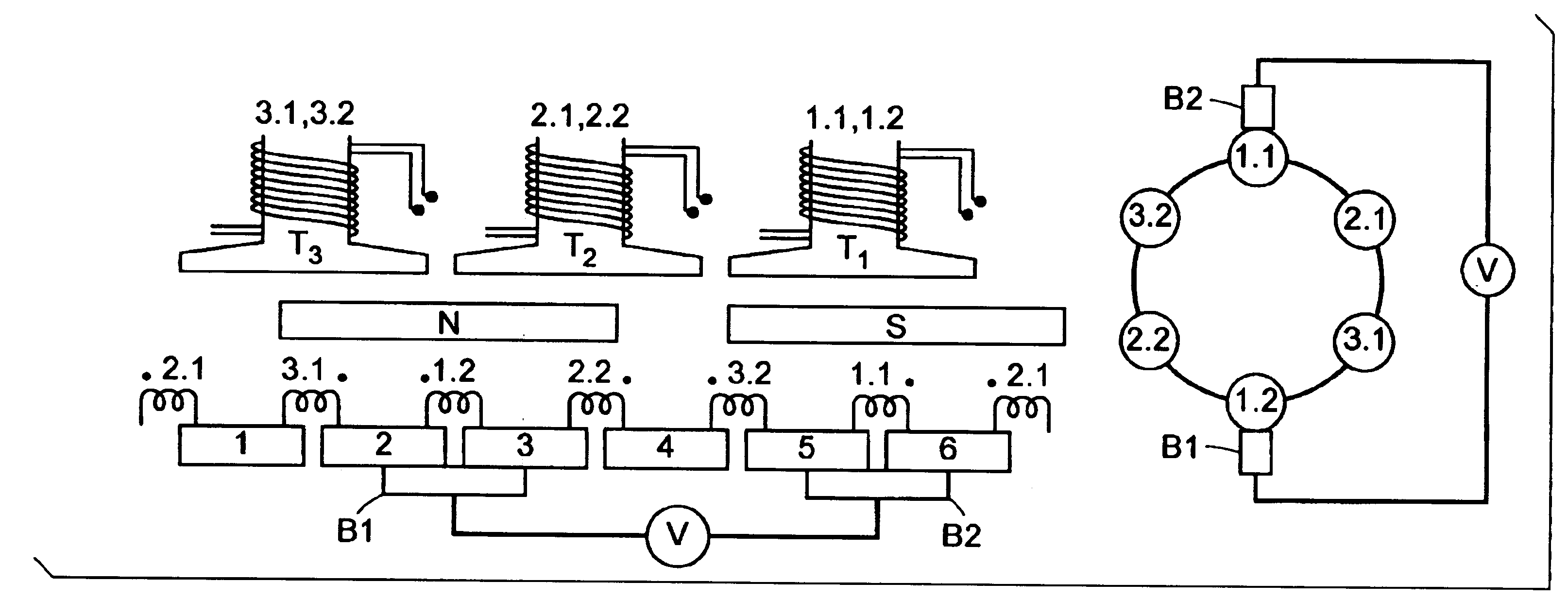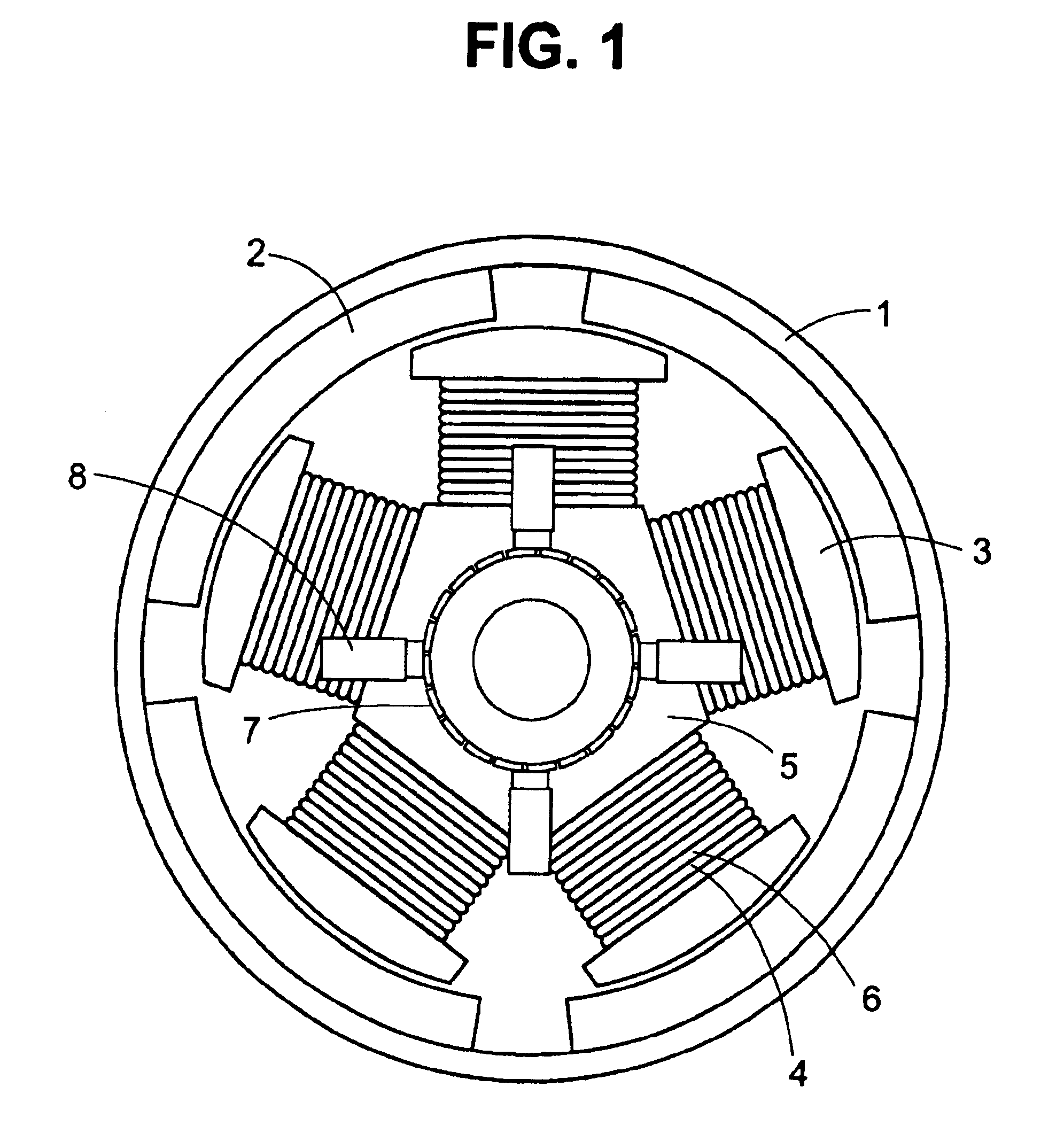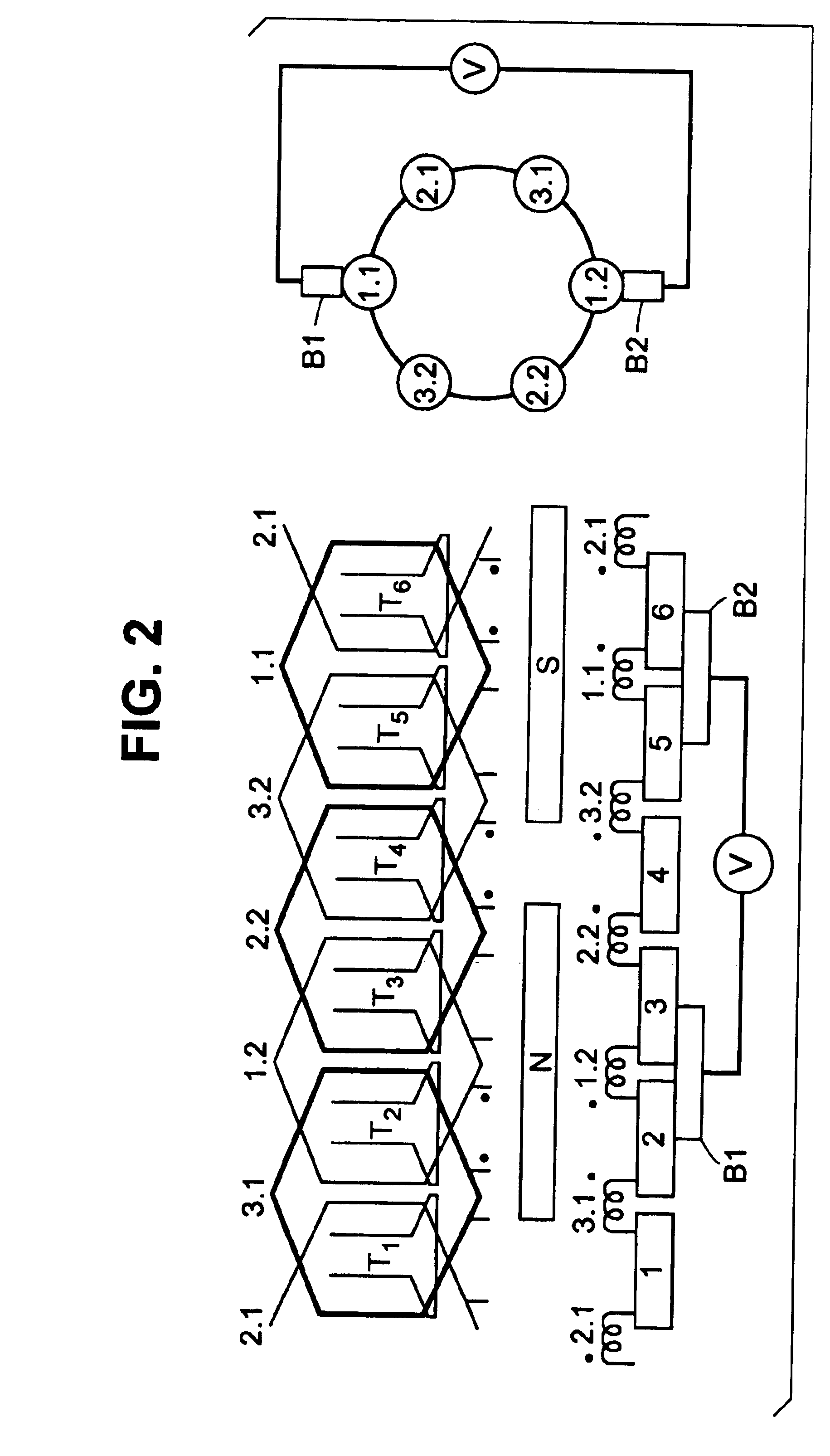Brush DC motors and AC commutator motor structures with concentrated windings
a commutator motor and brush technology, applied in the direction of dynamo-electric machines, rotary current collectors, electrical apparatus, etc., can solve the problems of unintended heating of coils and brushes, poor commutation, unfavorable commutation, etc., to reduce the inductance value of each simple coil, reduce the number of turns, and improve the effect of current commutation
- Summary
- Abstract
- Description
- Claims
- Application Information
AI Technical Summary
Benefits of technology
Problems solved by technology
Method used
Image
Examples
Embodiment Construction
[0038]In one embodiment of the present invention, the rotor has a regular distribution of rotor teeth with identical dimensions, and there are 2P poles, magnetized alternatively North and South in the stator. These poles can be constructed with segments of permanent magnet mounted on the surface of a core made of soft magnetic material or with coils wound around teeth made of soft magnetic material and fed by a DC or AC current. The rotor core has S slots. The simple coils of the rotor are wound around S teeth or in some case around S / 2 teeth only. There are z segments on the commutator which are connected to the terminals of the coils. 2B brushes are sliding on the commutator surface when the rotor is rotating. The characteristics of these machines respect the following conditions:
[0039]
P is an integer and0 S = 2P + AA is an integer equal to −1 or 1 or 2 or S > 2Z = k*LCM(S,2P) ± nk is an integer greater than 0LCM is the Least Common Multiple of S and 2Pn is equal to 0 or kB = P or...
PUM
| Property | Measurement | Unit |
|---|---|---|
| torque-weight ratio | aaaaa | aaaaa |
| soft magnetic | aaaaa | aaaaa |
| axial length | aaaaa | aaaaa |
Abstract
Description
Claims
Application Information
 Login to View More
Login to View More - R&D
- Intellectual Property
- Life Sciences
- Materials
- Tech Scout
- Unparalleled Data Quality
- Higher Quality Content
- 60% Fewer Hallucinations
Browse by: Latest US Patents, China's latest patents, Technical Efficacy Thesaurus, Application Domain, Technology Topic, Popular Technical Reports.
© 2025 PatSnap. All rights reserved.Legal|Privacy policy|Modern Slavery Act Transparency Statement|Sitemap|About US| Contact US: help@patsnap.com



